KEF LS50 Meta
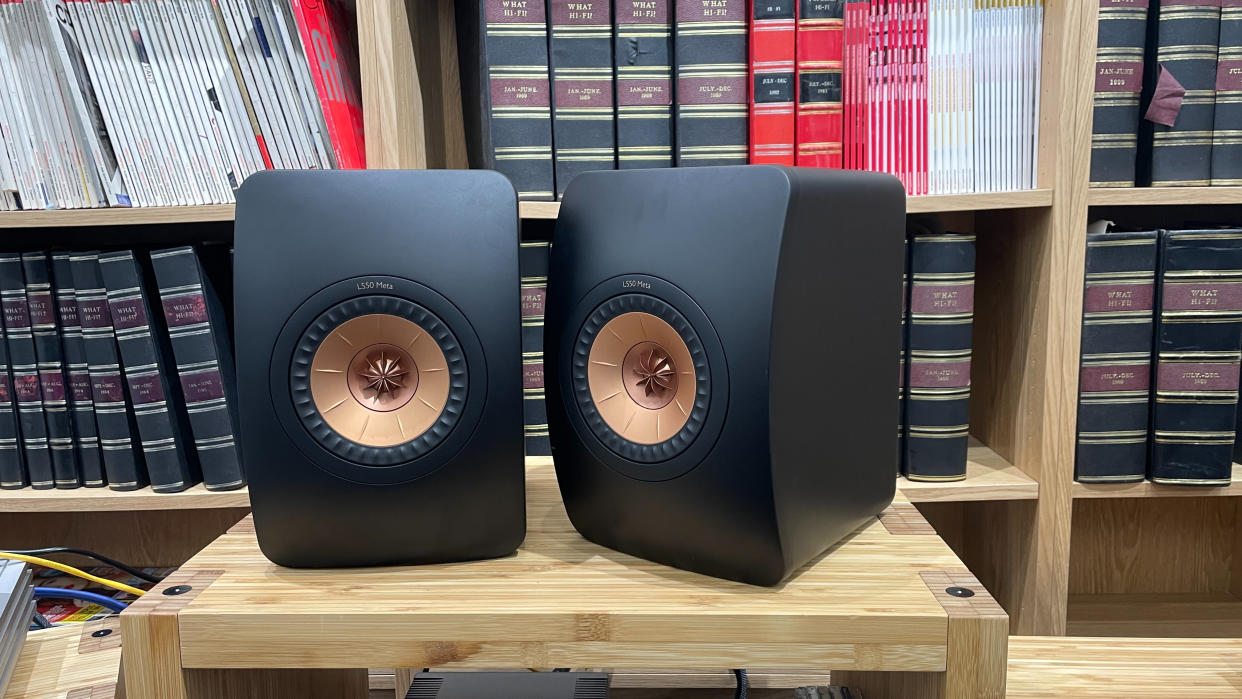
KEF launched the original LS50 as an anniversary celebration back in 2012. These standmounters proved a huge success, so much so that they have continued in production pretty much untouched until 2021.
Nine years is a long run by any standards, but it was made possible by a combination of sound quality, build and aesthetics that remained highly appealing. That didn't stop the company’s engineers from having a fresh look, however, and the result is the KEF LS50 Meta. As a current and now multiple What Hi-Fi? Award winner, the LS50 Meta raised and set the performance standard for stereo speakers anywhere close to this price.
Build
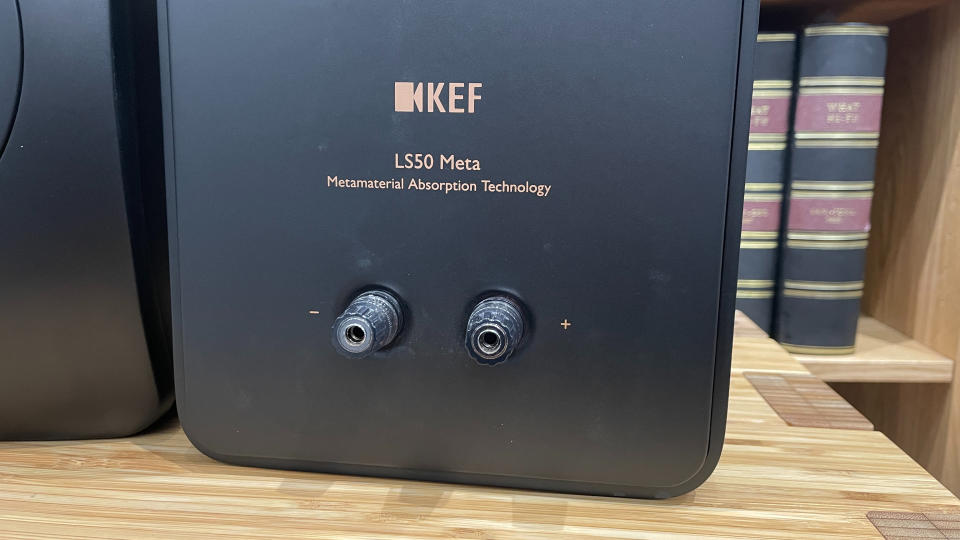
The LS50 Meta don’t look any different from the LS50, and in many ways they aren’t. The company considered revising that beautifully made enclosure but concluded that little could be improved.
The cabinet shape and size still works well, and the curved front panel – made of Dough Moulding Compound: a polyester resin combined with glass fibre and calcium carbonate – continues to make for an impressively rigid and well-controlled foundation for the Uni-Q drive unit array.
KEF LS50 Meta tech specs

Max power 106dB
Sensitivity 85dB
Frequency response 79Hz - 28kHz
Ported Yes (rear)
Impedance 8ohms
Dimensions (hwd) 30.2 x 20 x 27.8cm
Weight 7.2kg
The rest of the box is made from MDF, which is heavily braced and carefully damped to minimise any resonances. The LS50 Meta are available in four finishes – Mineral White, Carbon Black, Titanium Grey and a Royal Blue Special Edition.
The only obvious changes are to the back panel, which has been tidied up. The fixing holes for the front baffle retention bolts have disappeared, and there has also been some cosmetic detailing to make it all look neater.
The one area ripe for improvement was the LS50’s Uni-Q driver array, where the tweeter sits in the throat of the mid/bass unit. This has been thoroughly reworked, taking in all the refinements that KEF has developed over the past eight years and adding something new in the form of Metamaterial Absorption Technology (MAT).
MAT is KEF’s way of coping with the sound that comes off the back of the 25mm aluminium tweeter dome. In a conventional design, this sound usually fires into a chamber behind the dome where it is mostly absorbed by damping material. But some sound energy always bounces back through the dome to add distortion.
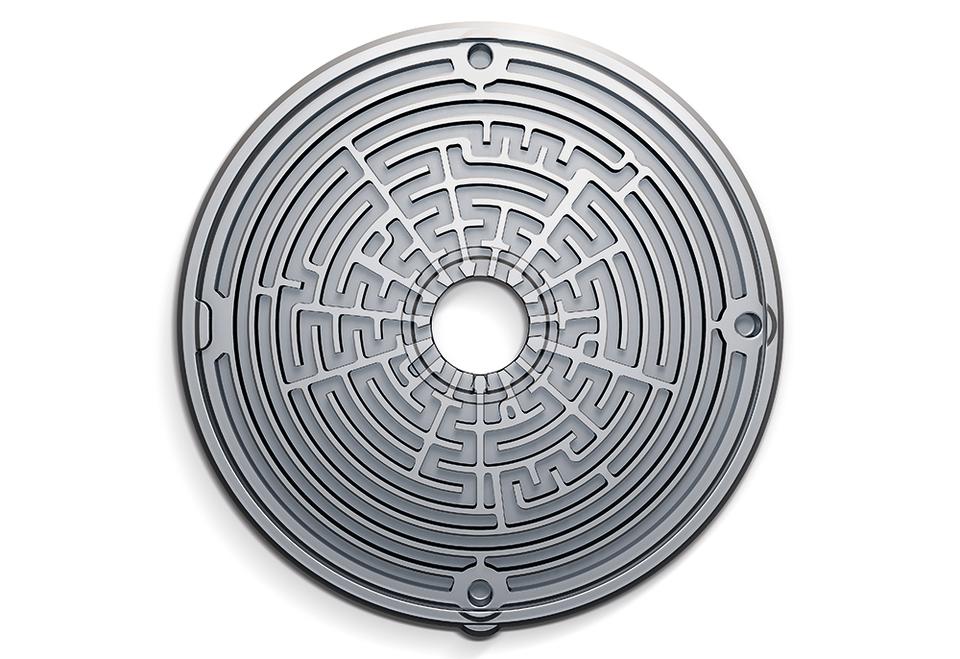
Here, the rearward sound feeds into something about the size of a hockey puck that looks like a plastic circular maze. It is layered and made up of 30 tubes, each tuned to absorb a different frequency. KEF claims that, once combined, the tubes absorb a wide range of frequencies – from around 600Hz upwards – much more effectively than alternate methods. The result should be cleaner, less distorted highs.
We've since seen – and heard – this MAT technology used in the Award-winning KEF LS60 Wireless speakers, with the tech itself proving to be such a clever, effective piece of engineering that we crowned it 2020's Innovation of the Year at that year's What Hi-Fi? Awards. More recently, MAT has also made its way into the new KEF R3 Meta and Reference 1 Meta passive speakers to five-star success.
Compatibility
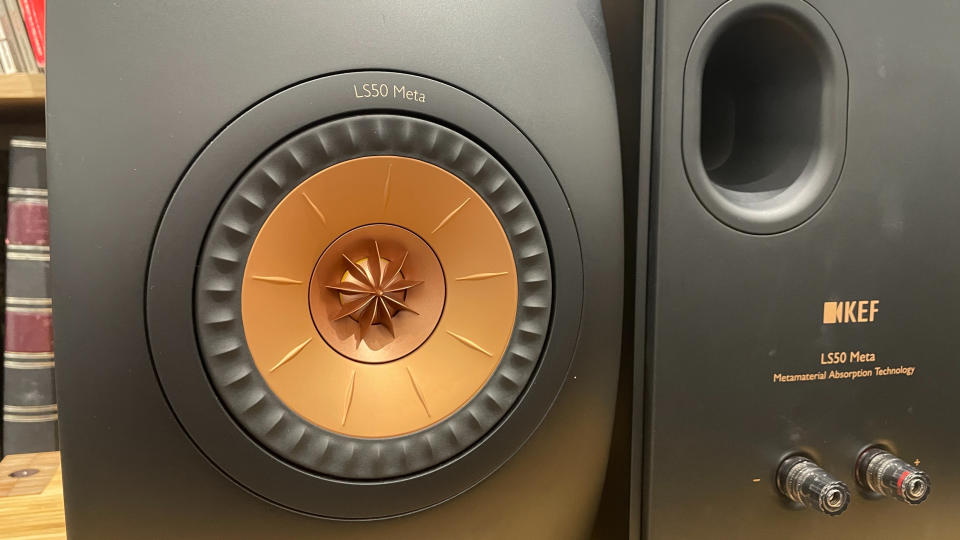
There have been tweaks to the crossover to take all the drive unit changes into account. Aside from a slight shift in crossover frequency – from 2.2kHz to 2.1kHz – the specifications look identical.
These aren’t particularly sensitive speakers, at a rated 85dB/W/m, and the minimum impedance is just 3.5 ohms, so it makes sense to partner them with an amplifier that has a bit of grunt.
We suggest the five-star Cambridge Audio CXA81 and Arcam A15 integrated amplifiers with a suitably capable source, though such are the LS50 Meta’s capabilities that you could easily use the likes of the more premium Naim SuperNait 3, and the speakers wouldn’t be limiting. We've tried all three combinations, including pricier models, over the last few years and the KEF more than hold their own.
In fact, these LS50 Meta speakers are now a staple of What Hi-Fi?'s listening room reference system, and we pair them with most price-compatible sources and amplifiers that go through our reviewing process.
At just 30cm tall, these KEFs are pretty compact, but don’t be tempted to stuff them in a bookshelf or right up against a wall. They won’t sulk if you do, but they will sound a lot better if placed around 50cm into a room and well away from the sidewalls. We've also suggest placing them on dedicated speaker stands for the best results.
Sound
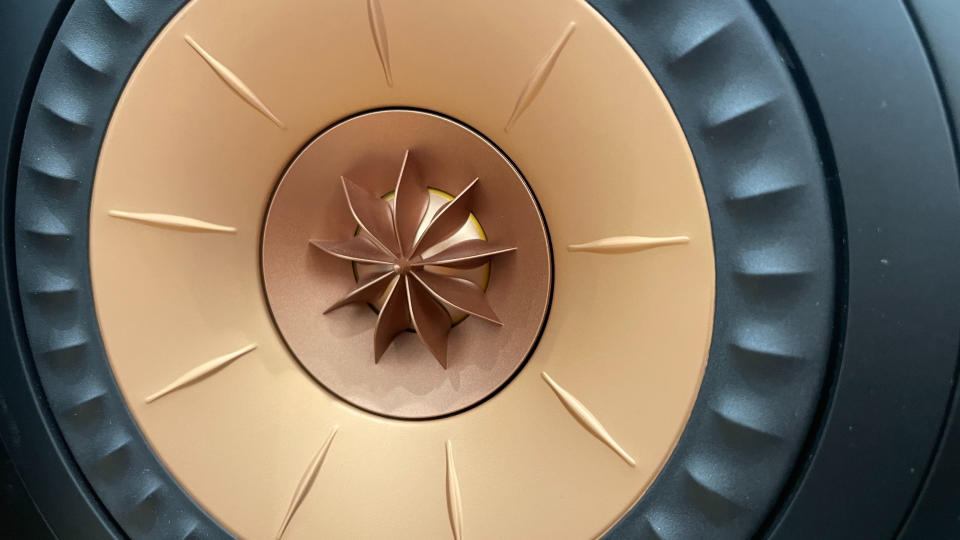
It doesn’t take long to realise that the LS50 have improved significantly. While the basic sonic character is instantly familiar, the new ones have gained a level of clarity and finesse the originals only hinted at.
Listening to Beethoven’s Fifth Symphony, we’re soon marvelling at the LS50 Meta’s delicacy and precision. They sound so much more transparent than before and manage to render low-level details, such as instrumental textures, much more convincingly.
It’s a surprisingly full-bodied presentation with a good degree of authority for such compact speakers. Still, there’s only so deep a 13cm magnesium/aluminium mid/bass unit in a smallish, 30cm-tall cabinet can go. Stretch to the likes of the newer, larger three-way KEF R3 Meta (£1900 / $2200 / AU$3900) and you’ll get notably more in terms of low-frequency reach, refinement and openness. But you might miss out on the LS50 Meta's lovely sense of integration.
And the Metamaterial technology really works, too. These new KEFs sound so much cleaner and more sophisticated than before, particularly at higher frequencies. The LS50 Meta make the older non-Meta R3 speakers sound congested and ham-fisted in comparison, and that’s a real shock.
Large-scale dynamics are handled well and there’s a good amount of muscle for a speaker of this size. These are refined and composed performers that rarely sound stressed unless volume levels are high.
There’s little to complain about when it comes to tonality. The KEFs sound smooth and balanced while still having enough in the way of high-frequency bite. They will reveal the shortcomings in poor recordings, but don’t go out of their way to be nasty.
KEF’s Uni-Q designs tend to image well by their very nature, and these speakers are no different. The LS50 Meta generate an expansive and tightly focused soundstage where the instruments are layered convincingly. We’re also impressed by the image’s stability when the music gets demanding.
We switch to Neneh Cherry’s Blank Project and these KEFs continue to shine. Their detailed and clear midrange performance makes the most of Cherry’s passionate vocals, delivering dynamic nuances and subtle shifts in timing superbly. There’s a good degree of punch to the bass and the KEFs render rhythms in a surefooted manner. We’ve heard more enthusiastic rivals, but none that can match the KEF’s many and varied range of strengths.
Verdict
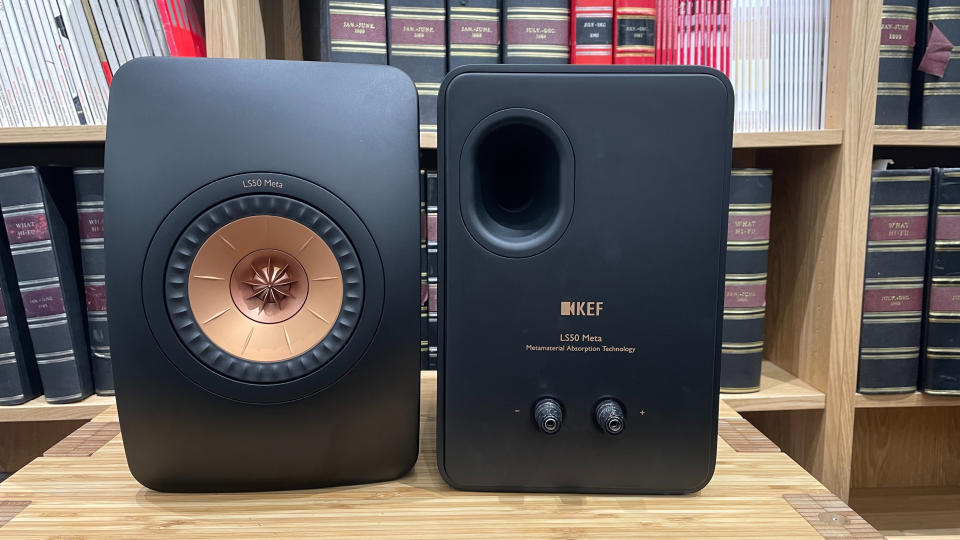
We’ve always loved the LS50 and this new version takes their performance to a notably higher level. KEF has impressed us with its Metamaterial technology and continues to delight us with every speaker it's implemented in.
As things stand, that tech and all the other work KEF’s engineers have put into the Uni-Q array has propelled the LS50 Meta speakers to the head of the class at this level. Three years on and they still sit comfortably at the top of our best hi-fi speakers guide. Buy them with confidence.
SCORES
Sound 5
Compatibility 5
Build 5
MORE:
Check out the best hi-fi speakers for every budget
See all the What Hi-Fi? Awards 2023 winners
Read our KEF LS50 Wireless II review
And the new KEF R3 Meta review

